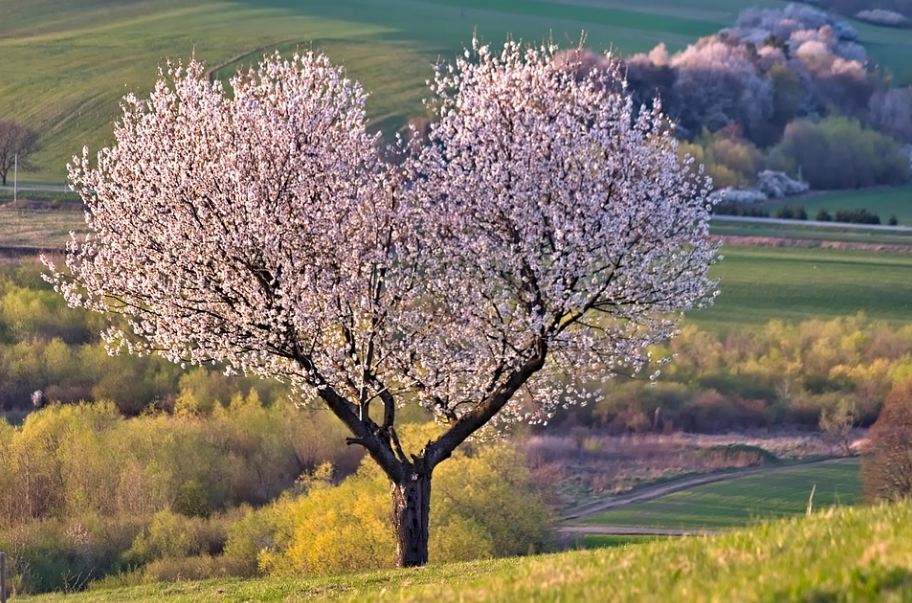Cherries are the most famous fruit on top of cakes, mousses, cupcakes, flavored jams, and fruit stews. This tiny round red fruit, which is named after its tree, can be eaten fresh or used as a flavoring to dishes, especially with pastries and as appetizers in salads and salsas. If you need some tree care tips read this grow trees with Round Rock Tree Experts.
There are about 1000 types of cherries, but the larger varieties of cherries are usually the ones with better taste and texture. The most familiar types include maraschino, black, bing, and rainier cherries. The black stone cherry, chokecherry, morello, north star, napoleon, and Spanish cherry cherries are less well-known types.
Children are so delighted with cherries, especially on cakes.
THE PLANT
Cherry trees grow abundantly in the North Hemisphere regions, especially during summertime. However, they are commonly preserved for the whole year’s commercial use.
The trees of cherries can grow straight and really tall, reaching about 11 meters high. Smaller cherries that rarely reach about 5-meter high usually bear acid cherries. In some regions, with excellent growing conditions and care, the trees can reach their optimal conditions and reach 30 meters.
The cherry tree, Prunus avium (sweet cherries) have a thick trunk, and the Prunus cerasus (acid cherries) have a thin trunk where the branches grow.
The wild species of cherries have round, small, black or red, sweet or acid fruits depending on the species. The sweet cherries are very sweet, but the acid ones taste strongly sour or acid.
Any trees belonging to the genus Prunus have edible fruits. The sour cherries (Prunus cerasus) are frozen or canned and used in sauces and pastries. The sweet varieties (P. avium) are usually consumed fresh and are the principal type preserved in true or imitation maraschino liqueur. Some species, because of their prolific blossoms, are grown for ornamental purposes. Those with dark redwood varieties are esteemed for the manufacture of fine furniture.
When buying fresh sweet cherries, choose the heavy, dark red, or black ones. But with acid cherries, select the pale red or the pinky yellowish ones. In both cases, the stem should be well joined to the cherry.
TIPS IN GROWING CHERRIES
Better not to grow a Cherry tree from a seed
If you grow a cherry using a seed, don’t expect that it will bear fruits with the same taste as those you’ve eaten; the tree is the same variety as its parent.
A better option is to plant a young tree instead. Go to a local nursery and ask the best-grafted cherry plant suited to your climate and soil.
Choose the best variety suited for your environment
Choose your cherries. If you try your luck growing from seeds, just look for some fresh cherries from a market or a local tree in mid to late summer. Early-fruiting varieties tend to be sterile, while grocery store fruit can work with a low success rate.
The best way is to get a good large handful, to have greater chances that many of them will sprout. You can choose from either of the two common species of cherries: the sweet cherries and the sour cherries.
Fresh cherries sold in the market are mostly sweet cherries that are best for eating. But most belong in the USDA hardiness zones 5–7.
Sour cherries, on the other hand, are easier to grow and can survive in zones 3-8 depending on the variety.
Check the growing conditions
If you plant outdoor, do it in early fall. For cherries to grow well, they need to experience constant damp and cold for 3–5 months to germinate. When cold weather during winter extends longer, but don’t get below -20ºF / -30ºC, you can plant the cherries in fall instead.
Sweet cherries like warm weather for a couple of weeks before enjoying the cold. So, it is best to plant them in late summer or the very start of fall, so they grow at their best. The other concern is when a “warm snap” happens again after the cold weather has started because some cherries will be back into dormancy.
WATER AND FERTILIZER REQUIREMENTS
Watering the Trees
After planting them until the entire first year of their life, watering cherries is essential to their growth. During the first week, they should be watered deeply every other day. In the second week, water them deeply about 2-3 times a week, water them once a week after the second week, and the rest of the first season.
Adjust watering depending on the weather and the occurring season. Pull weeds around them, so they get most of the water and the nutrients. It would help if you also put mulch around the tree root zone to retain the moisture.
Fertilize the Trees Regularly
Apply a low-nitrogen fertilizer such as 5-10-10 once a year, advisably in early spring, about a month before bloom.
During the late summer and fall, keep high-nitrogen fertilizers away from cherry trees as excess amounts tend to make cherries more prone to brown rot infection. If you have planted the cherries in your yard and you’re fertilizing the yard, the trees are probably getting more than enough nitrogen. So, do not apply any more nitrogen fertilizer, but add a 0-10-10 or similar fertilizer only.

